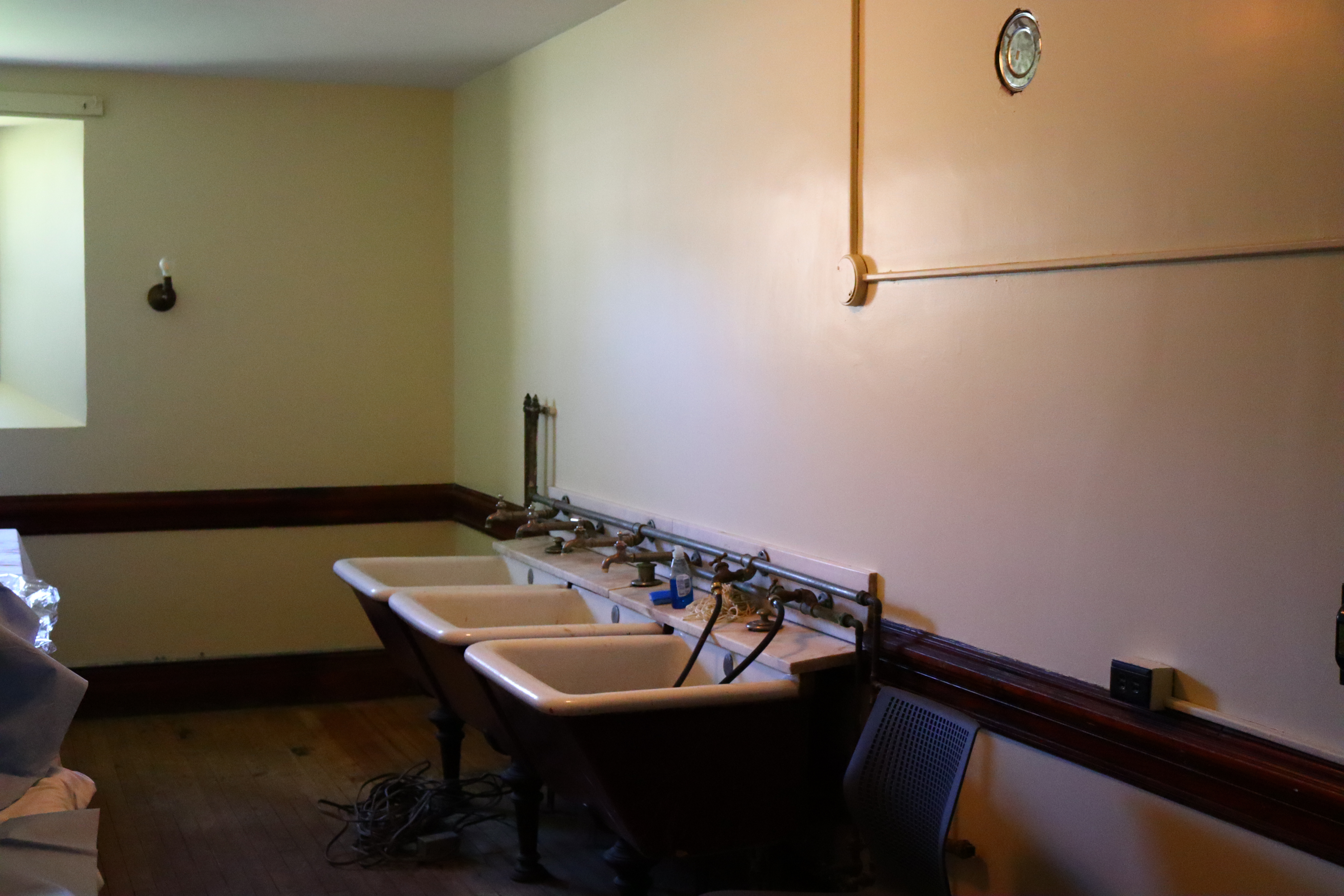
The servant laundry room (NPS photo)
The main laundry room, however, is more elaborate. It contains five wash tubs, several tables for ironing garments and linens, a coal-stove to heat irons, cabinets to store laundry supplies, as well as drying racks. These drying racks look like vertical drawers in the wall that when pulled out, reveal bars on which to hang clothing. When the racks were closed, clothes would dry within a heated room. Missing from the main laundry today are some of the accessories that would have aided the work of the staff, like wringers, mangles, and vacuum washers.
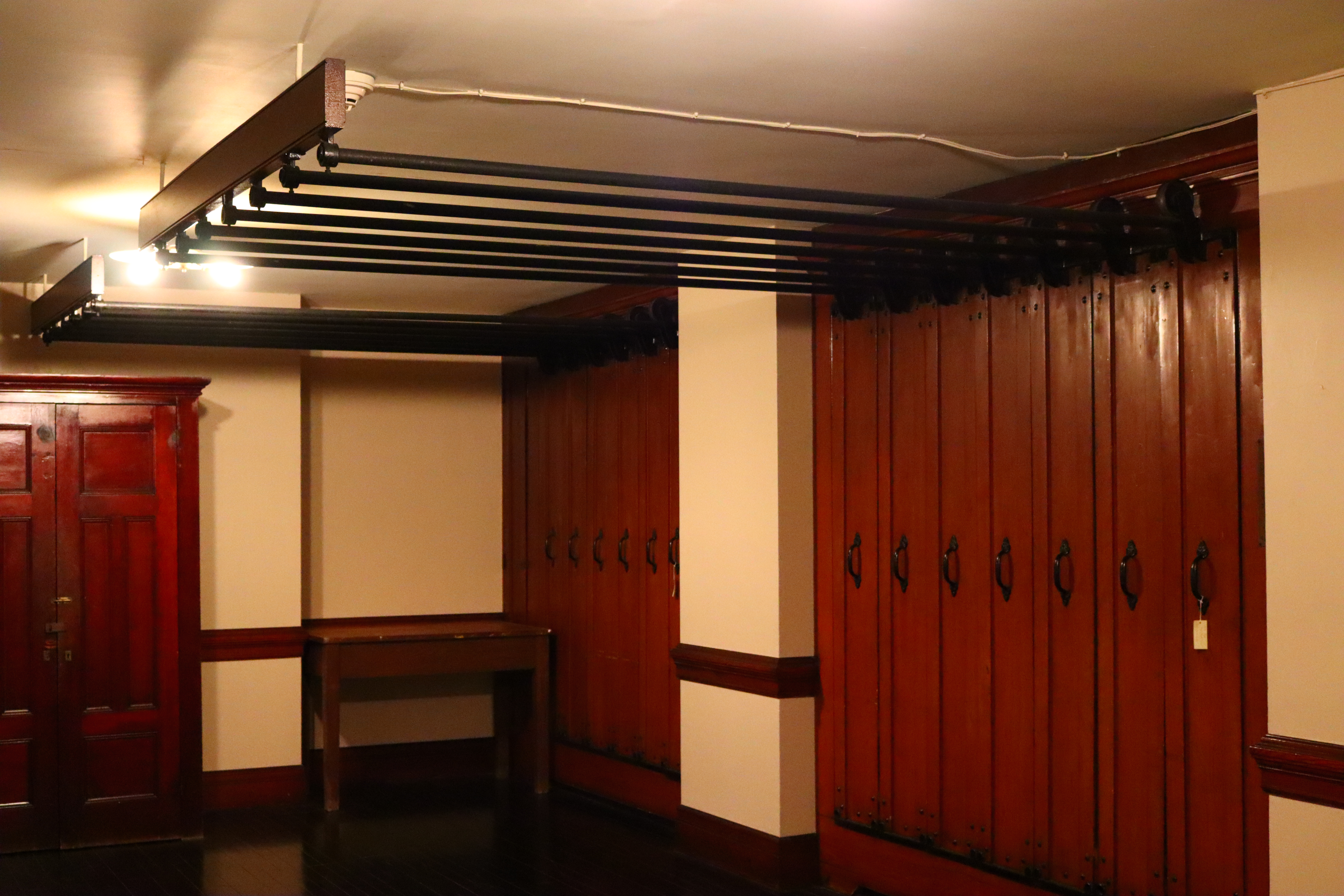 The main laundry's drying racks (NPS photo)
The main laundry's drying racks (NPS photo)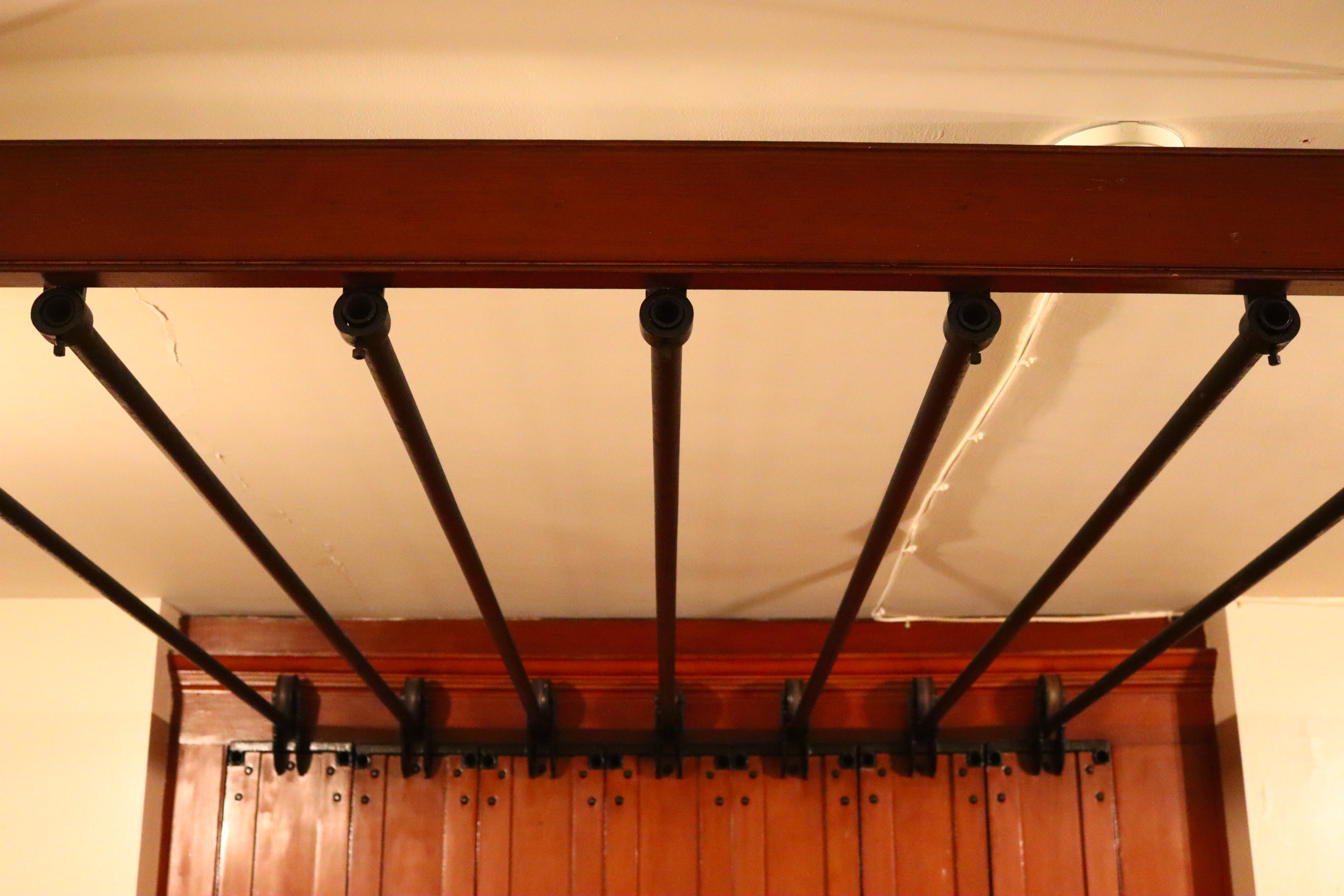 The rails of the main laundry's drying rack (NPS photo)
The rails of the main laundry's drying rack (NPS photo)According to Mary Elizabeth Carter, a former housekeeper and author of a 1903 housekeeping book for the wealthy titled Millionaire Households, a proper laundry room in a Gilded Age mansion had to meet a few requirements. First, it had to be in an isolated location within the house. This was to cut down on foot traffic through this area, where clean garments and linens would likely be hanging to dry. Secondly, the laundry room had to have abundant sunlight and good ventilation.
A suitable laundry also had to be well equipped with all that the laundresses needed to do excellent work: irons for garments of every size, ironing tables, and the appropriate solutions, powders, and detergents, to get clothes clean. A cabinet well stocked with “…dried soap, starch,-domestic and Swiss,- bluing, ammonia, javelle-water, salts of lemon, gum Arabic, etc., and oxalic acid for keeping the copper boilers shining” was to be found in this room. “In brief, every known thing considered essential to the fine art of laundering is found here ready to serve its purpose when needed” is how Carter described these cabinets. According to her, the ideal millionaire’s laundry room should be so well equipped as to make it impossible for staff to use a lack of resources as an excuse for imperfect work. The Vanderbilt laundry room follows these tenants, for the most part, and we have reason to believe it would be equipped with the supplies suggested in a book like Carter’s.
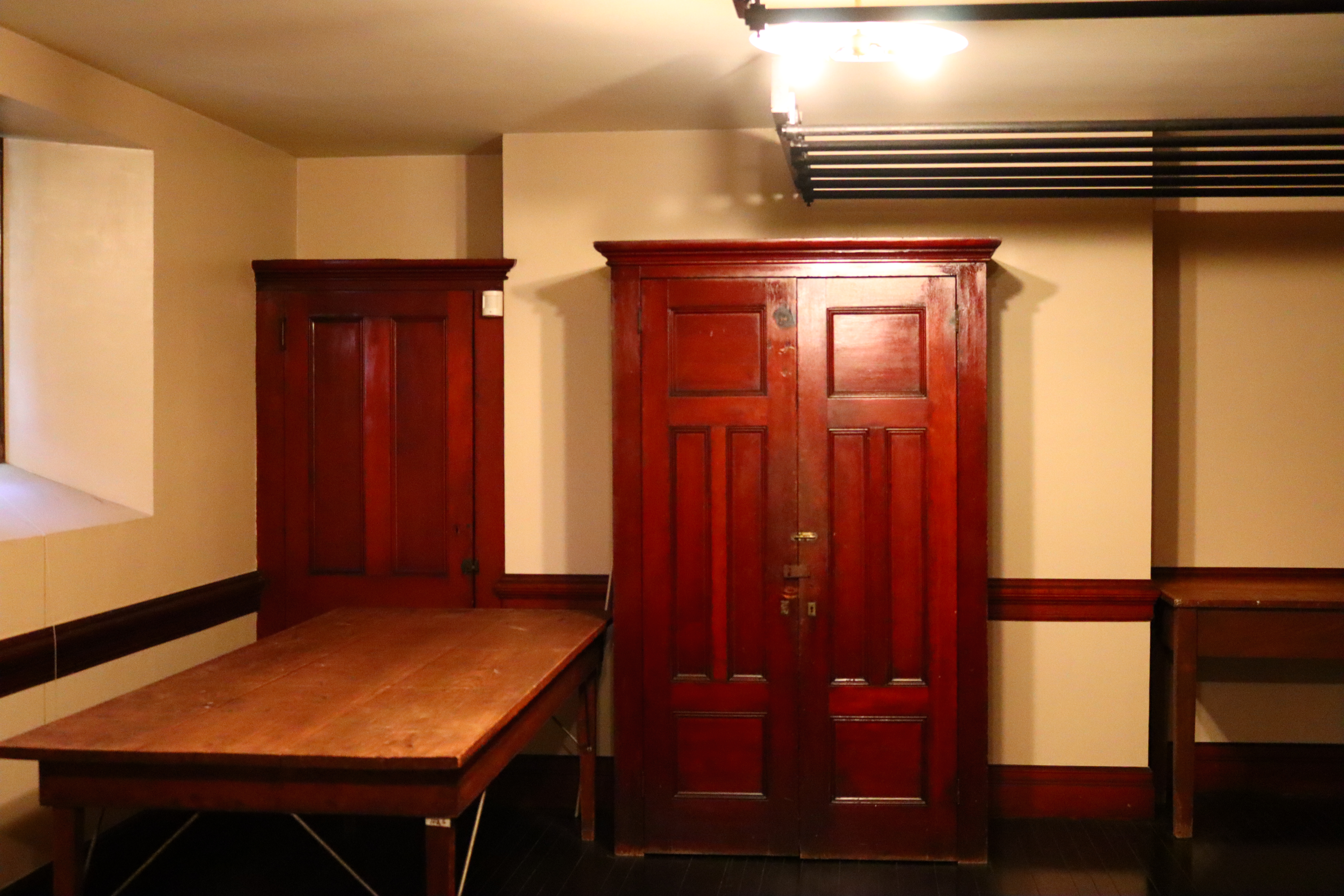
The main laundry's supply cabinets (NPS photo)
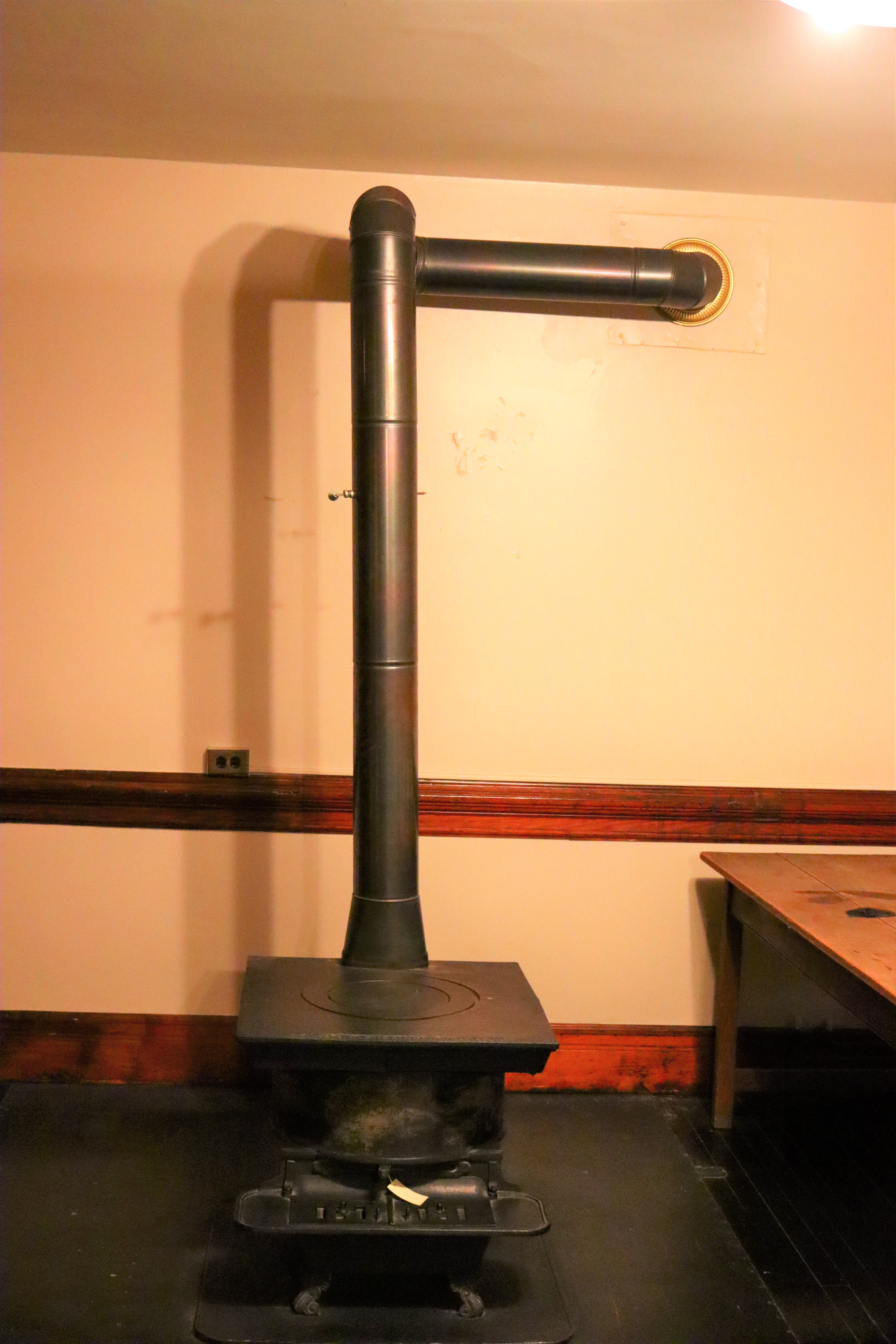
This stove was used to heat irons in the main laundry room. A top component was removed at some point (NPS photo)
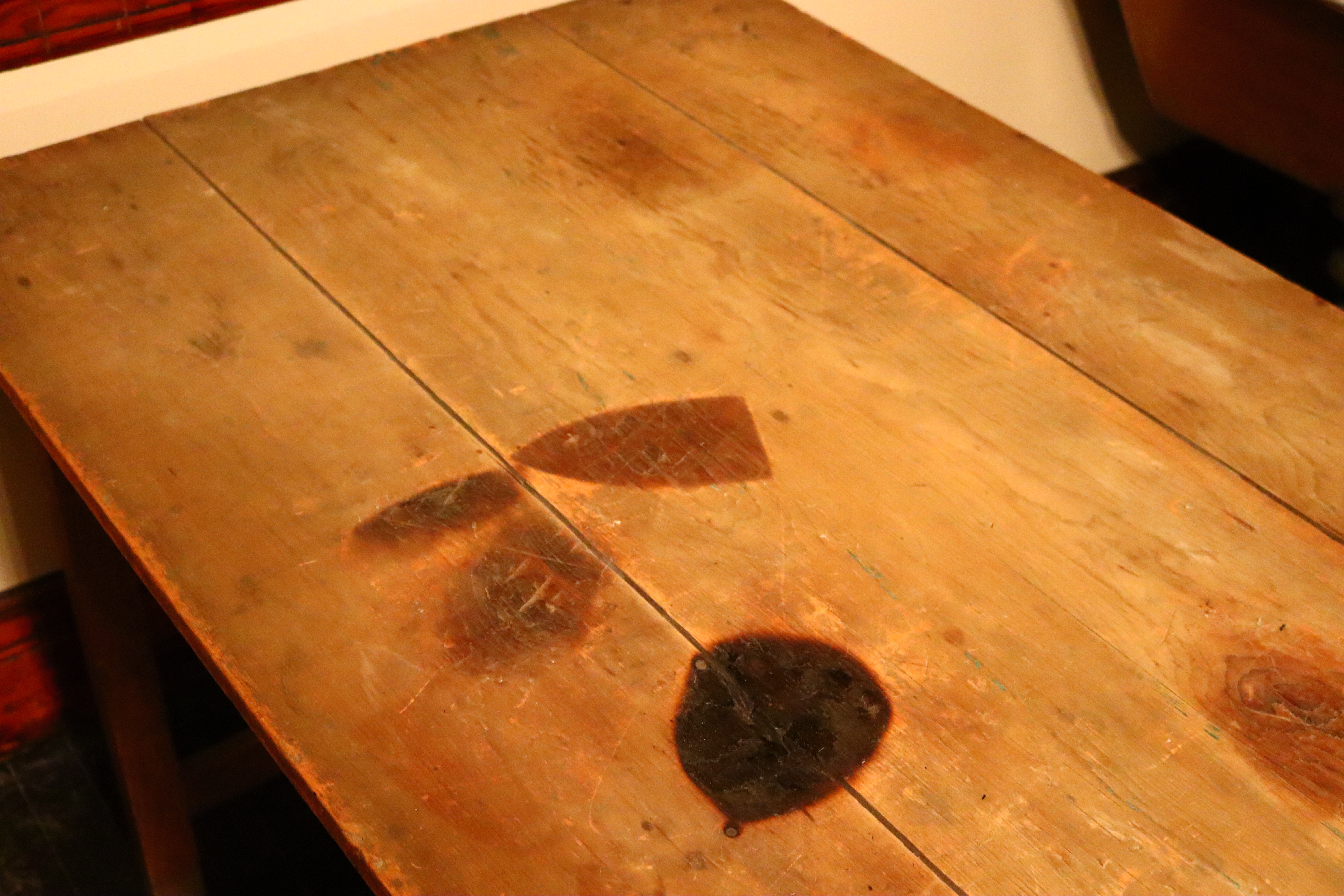
An ironing table in the main laundry (NPS photo)
The laundry room was the domain of the Head Laundress and her team, which was almost always made up of women. According to Carter, Head Laundress was a position of great importance:
Hers is an onerous position. She is responsible for everything sent to the laundry and must keep a strict account of all that reaches her, and see that everything is returned in good season, without spot or wrinkle…Thousands of dollars’ worth of clothing, house-linen and household goods pass through her hands bi-weekly. The cost of a single article often exceeds the highest wages paid for a year to any one of the corps of servants.
It's possible that the Vanderbilts sent their clothing to a professional laundress, meaning that their laundry servants only needed to clean linens. The Under-Laundress was her next in command. This woman was responsible for overseeing the servant’s laundry next door in the servant’s laundry room.
Doing laundry during the Gilded Age was hard work. Laundresses were on their feet nearly all day, toiling over tubs of boiling water and using a variety of chemicals to get clothes clean. This made theirs an uncomfortable and somewhat dangerous job. If their employers were kind, mats were supplied to make standing over their work for long periods a little more comfortable. Some laundry rooms also featured raised wooden platforms for workers to stand on, so they could avoid slipping on a wet floor.
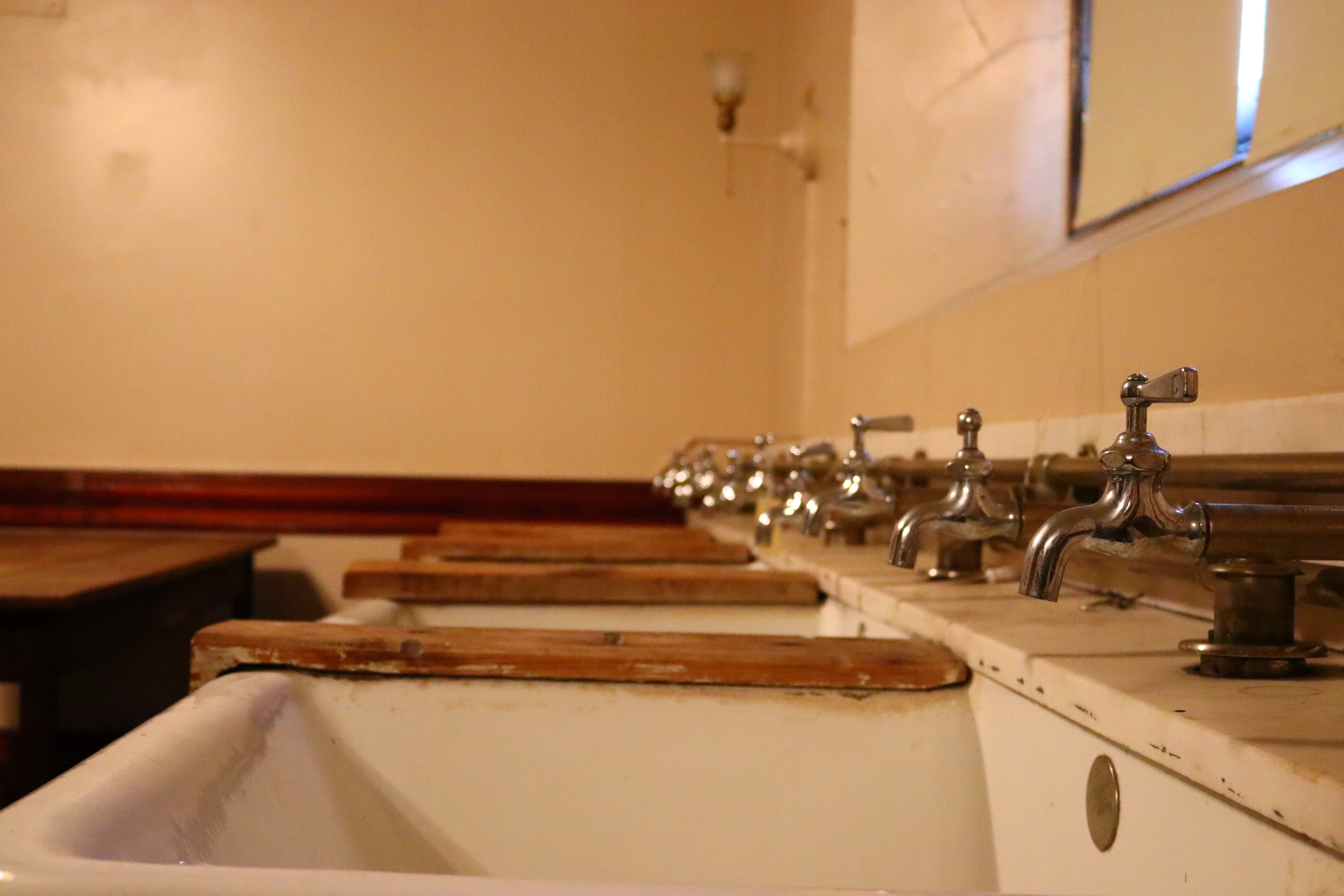
The main laundry room's wash tubs (NPS photo)
A laundress’s work week lasted from Monday morning until Saturday evening. These ladies would be afforded a few brief breaks throughout the day and usually had Sundays off to do as they pleased. Typically, the salaries of laundry employees ranged from around $30 to $18 per month, depending on an individual’s position.
While the bedrooms and sitting rooms filled with antique furniture in the Vanderbilt Mansion look familiar to the modern eye, the laundry rooms feel a little foreign to someone accustomed to modern conveniences. Through these rooms, we can understand and appreciate the hard work needed to care for the Vanderbilt Mansion and maintain a millionaire’s lifestyle during the Gilded Age.
Bibliography:
Carter, Mary Elizabeth. Millionaire Households and their Domestic Economy. New York: Appleton, 1903. https://curiosity.lib.harvard.edu/women-working-1800-1930/catalog/45-990022078610203941.
Vanderbilt Mansion National Historic Site Historic Furnishings Report: Historical Data, Volume II: Service Areas and Appendices. Charlestown, Massachusetts: National Park Service Northeast Museum Services Center, 2015.
